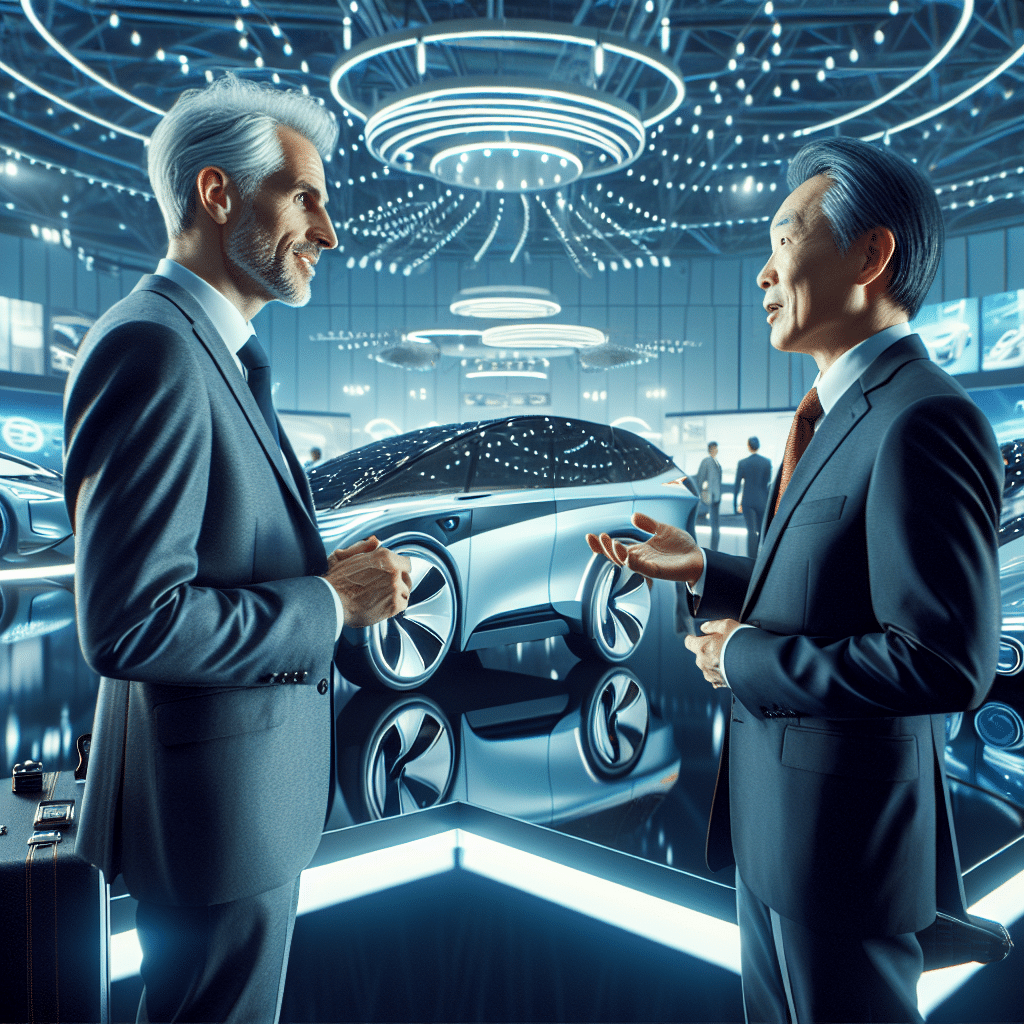Electric Vehicle Showdown: China Vs. America – Who Will Win?

Table of Contents
China's EV Dominance: A Rising Powerhouse
Massive Domestic Market & Government Support
China boasts the world's largest EV market, creating immense economies of scale. This massive domestic demand fuels innovation and production, allowing Chinese manufacturers to rapidly refine their vehicles and reduce costs. Government support is crucial; generous subsidies, tax breaks, and purchase incentives significantly boost EV adoption. Initiatives like the "New Energy Vehicle" (NEV) policy actively promote the development and manufacturing of EVs, including stringent emission standards that push automakers towards electric options.
- BYD: Leading the charge with diverse models, from budget-friendly sedans to luxury SUVs.
- NIO: Known for its battery-swapping technology and premium vehicles.
- Xpeng: Focusing on advanced driver-assistance systems (ADAS) and smart features.
- Li Auto: Specializing in extended-range electric vehicles (EREVs).
Advanced Battery Technology & Supply Chain
China dominates the supply chain for crucial battery materials like lithium, cobalt, and nickel. This control over raw materials grants them a significant cost advantage and ensures a stable supply for their booming EV industry. Furthermore, Chinese companies are rapidly advancing battery technology, focusing on increased energy density, faster charging speeds, and improved battery life.
- CATL: The world's largest battery manufacturer, supplying major automakers globally.
- BYD: Developing its own Blade Battery technology known for its safety and energy density.
- CALB: A significant player in the lithium-ion battery market, providing batteries for various EV models.
Cost-Effectiveness and Scalability
Chinese EV manufacturers have mastered the art of cost-effective production. Through economies of scale, efficient manufacturing processes, and readily available components, they produce EVs significantly cheaper than many Western competitors. This affordability is a key factor in driving mass adoption within China and making their EVs competitive in global markets.
- The price point of many Chinese EVs makes them accessible to a wider range of consumers, both domestically and internationally.
- Chinese manufacturers demonstrate the ability to rapidly scale production to meet the growing global demand for electric vehicles.
- The cost-effectiveness of Chinese EVs allows them to compete effectively against established carmakers in international markets.
America's EV Push: Catching Up?
Innovation and Technological Leadership
Despite China's market dominance, the US remains a powerhouse of EV innovation. American companies are at the forefront of advancements in autonomous driving technology, battery chemistry, and charging infrastructure. Companies like Tesla continue to push the boundaries of EV performance and technology.
- Tesla: A pioneer in EV technology, known for its advanced battery technology and autonomous driving capabilities.
- Rivian: Focusing on electric trucks and SUVs with a strong emphasis on sustainability.
- GM (General Motors): Investing heavily in EV development and production, with various electric models in their lineup.
- Ford: Expanding its electric vehicle offerings with models like the Mustang Mach-E.
Infrastructure Development and Charging Networks
The US is investing significantly in developing its nationwide charging infrastructure. While still lagging behind China in terms of charging station density, substantial government initiatives and private investments are rapidly expanding access to fast charging stations across the country.
- Electrify America: A major player in developing a nationwide fast-charging network.
- ChargePoint: One of the largest charging networks in North America.
- Government initiatives such as the Bipartisan Infrastructure Law aim to accelerate the deployment of charging infrastructure.
Consumer Demand and Market Acceptance
The US EV market is growing steadily, driven by increasing consumer awareness of environmental concerns and technological advancements. However, factors like range anxiety, the availability of charging stations, and the initial high cost of EVs still present challenges to broader adoption.
- Government incentives and tax credits are playing a vital role in stimulating consumer demand for EVs in the US market.
- Increasing consumer awareness of environmental issues is driving demand for electric vehicles.
- The increasing availability of a wider variety of EV models at different price points is influencing consumer adoption.
The Critical Factors: A Comparative Analysis
| Factor | China | USA |
|---|---|---|
| Government Policy | Strong support, massive subsidies | Increasing support, but less extensive |
| Technological Advancements | Rapid progress, cost-effective solutions | Strong innovation, focus on high-end tech |
| Infrastructure | Extensive charging network | Expanding, but still less dense |
| Consumer Demand | High domestic demand, growing globally | Growing steadily, but facing challenges |
| Cost-Effectiveness | Highly competitive | Generally higher cost |
Conclusion: Who Will Win the Electric Vehicle Race?
While the US boasts technological leadership and is rapidly improving its infrastructure, China's massive domestic market, government support, cost-effectiveness, and control over the battery supply chain give it a significant advantage in the short term. In the long term, the outcome could be more nuanced. The US could regain ground through continued innovation and investment in its charging infrastructure. However, for now, China appears poised to dominate the global EV market. This dynamic landscape means the Electric Vehicle Showdown: China vs. America continues to unfold, making it a fascinating industry to follow. Stay updated on the latest developments in this exciting race to electrify the world!

Featured Posts
-
 Investing In Middle Management A Strategic Approach To Business Growth
May 04, 2025
Investing In Middle Management A Strategic Approach To Business Growth
May 04, 2025 -
 West Bengal Braces For Cold Temperature Plummets
May 04, 2025
West Bengal Braces For Cold Temperature Plummets
May 04, 2025 -
 Marvels Creative Challenges Maintaining Quality Across Multiple Projects
May 04, 2025
Marvels Creative Challenges Maintaining Quality Across Multiple Projects
May 04, 2025 -
 Marvel Cinematic Universe A Necessary Course Correction
May 04, 2025
Marvel Cinematic Universe A Necessary Course Correction
May 04, 2025 -
 Lizzos Weight Loss Journey Diet Exercise And Mindset
May 04, 2025
Lizzos Weight Loss Journey Diet Exercise And Mindset
May 04, 2025
Latest Posts
-
 Weather Alert Kolkata Temperatures To Rise Above 30 Degrees Celsius In March
May 04, 2025
Weather Alert Kolkata Temperatures To Rise Above 30 Degrees Celsius In March
May 04, 2025 -
 Ufc 314 Full Bout Order Revealed For Main Card And Prelims
May 04, 2025
Ufc 314 Full Bout Order Revealed For Main Card And Prelims
May 04, 2025 -
 Kolkata Temperature Forecast 30 C Expected In March
May 04, 2025
Kolkata Temperature Forecast 30 C Expected In March
May 04, 2025 -
 Ufc 314 Fight Card Main Event Prelims And Bout Order Announced
May 04, 2025
Ufc 314 Fight Card Main Event Prelims And Bout Order Announced
May 04, 2025 -
 Kolkata To Sizzle March Temperature Forecast Above 30 C
May 04, 2025
Kolkata To Sizzle March Temperature Forecast Above 30 C
May 04, 2025
